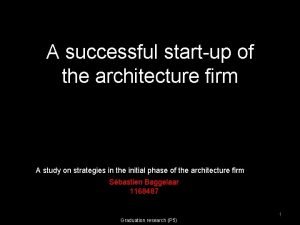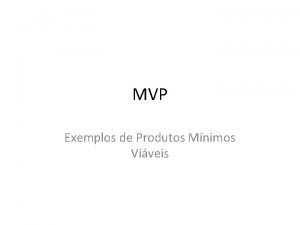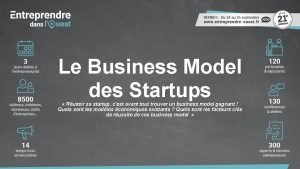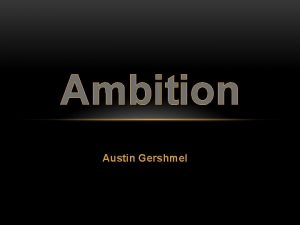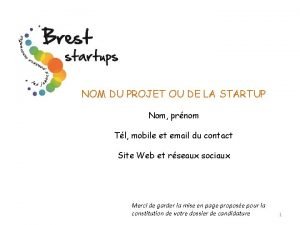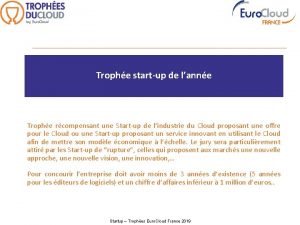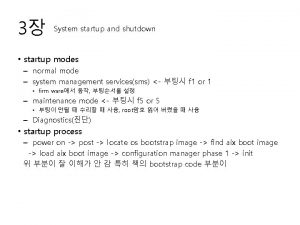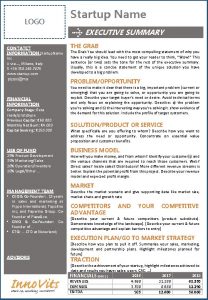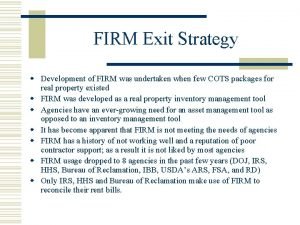A successful startup of the architecture firm A






























- Slides: 30

A successful start-up of the architecture firm A study on strategies in the initial phase of the architecture firm Sébastien Baggelaar 1168487 March 11, 2021 1 Graduation research (P 5)

Harde klappen voor architecten: branche gehalveerd ANP 21 NOV 2012 Nederlandse architectenbureaus verkeren al jaren in zwaar weer door de crisis, maar de situatie lijkt nu nijpender dan ooit. De branche is sinds 2008 in omvang ruim gehalveerd en ook voor volgend jaar wordt een verdere daling van omzet en werkgelegenheid voorzien. Turnover 1, 800 (x 10^6) 1, 600 25, 000 FTE 1, 670 20, 000 1, 400 1, 200 19, 500 1, 000 800 600 1, 095 900 14, 150 15, 000 807 11, 300 10, 300 400 10, 000 5, 000 2008 2009 2010 2011 0 BNA, 2012 2

Introduction Top 10 lowest income for graduates after 1. 5 years Elsevier, 2009 March 11, 2021 3

Introduction Percentage of economically sound firms BNA, 2008 4

Introduction Problem statement “Due to a lack of work, experience, finances and network, the initial phase is challenging for architecture firms. It is a highly competitive market, where architects are unprepared for their business management and often experience difficulties in finding the balance between the business and practice side of their firm. ” March 11, 2021 5

Research question “Which relations exist between strategies used in the start-up phase of the architectural firm and the success as experienced by these architects? ” Secondary research questions #1 “Which issues do architects face in their start-up phase? #2 “What determines the feeling of success for different types of architects? ” #3 “Which strategies are used by starting architecture firms to obtain their success? ” #4 “Which characteristics define different architects and architecture firms? ” 6

Methodology Characteristics Issues March 11, 2021 Strategies Success 7

Methodology Four parameters Issues Success Strategies Characteristics Mixed method Qualitative Literature Interviews Quantitative Survey Data analysis Exploratory research 8

Methodology Literature -Studies on the profession -Guide books Interviews -11 interviews/ 12 architects -3 rounds -Find variables for survey -Insight in the profession 9

Methodology Survey -308 respondents -Mostly younger architects Data analysis -3 methods -One-way ANOVA -Logistic regression -Cross tabulation -Compare data with literature, interviews 10

Methodology Four research parameters • The architect’s issues • The architect’s success factors • The architect’s strategies • The characteristics of the firm and architect 11

Issues Practice vs Business The efforts related to the design and those related to the survival of the firm. Subjective No objective means of measuring the quality. Individual An honourable profession with a distaste for marketing related matters. 12

Issues Commercialisation & professionalisation Client is no longer the user. Sophistication of the client. Changing role of the architect From manager to designer. From generalist to specialist. 13

Changing role of the architect Client Architect Contractor Traditional organizational diagram 14

Changing role of the architect Client Project manager Architect Contractor 3 D visualization Subcontractor Environmental advisor Mechanical consultant Geotechnical consultant Contemporary organizational diagram 15

Issues Commercialisation & professionalisation Client is no longer the user. Sophistication of the client. Changing role of the architect From manager to designer. From generalist to specialist. Image of the architect Egocentric soloist 16

Issues Core problems 1. 2. 3. 4. 5. There is not enough work for the architect The architect does not have an extensive network The architect does not have a reputation to rely on The architect does not have sufficient financial resources The architect does not have enough experience, both as a designer and as an entrepreneur 6. The architect lacks a business oriented work method. 17

Success factors To gain sufficient income To earn above sufficient income Satisfaction in projects Enjoyment in the profession To earn publications To win competitions To win architecture prizes To gain the appreciation of the client To gain the appreciation of the public To gain the appreciation of peers. A specific firm size A stable business Relevance as an architect Fame 18

Success factors -Income -Firm size -Achievements - Publications (recent, at the start of the career, in professional literature and in total) - Competitions (recent, at the start of the career and in total) - Architecture prizes (recent, at the start of the career and in total) -Subjective success (personal success and firm success) 19

Strategies Problems Work Experience Portfolio Knowledge A B C D E F G H I J K L M N O P Q R Start-up strategies Business plan Appeal for a grant Appeal for a loan Work elsewhere Cooperation with young firms Cooperation with experienced firms Cooperation with other businesses Maintain a website Maintain a social media profile Maintain a (micro) blog Architectural network Social network club Hobby club Volunteer work Other activities in the constr. industry Other design activities Work in a niche Specialise in a current issue Income Reputation Network Business orientation 20

Strategies 1 2 3 4 5 7 8 9 10 11 14 15 16 17 18 19 20 22 Firm activities Activities in construction Other design activities Research Consultancy Other Niche Specific buildings Specific clients Specific style Specific process Specific organisation Personal activities Architectural elsewhere Calculations Consultancy Research Construction supervisor Management Teacher Other means of inc Problems Work Portfolio Experience Knowledge Money Reputation Network Business orientation 21

Characteristics Architect characteristics Architect’s age Household composition Attended school Study activities Year of graduation Years of experience Previous experience Firm characteristics Feeling of start-up Firm age Number of principals Firm size Typology 22

Firm Typology I W. Coxe, 1987 March 11, 2021 23

Methodology Four research parameters • The architect’s problems • The architect’s success factors Income Firm size Achievements Subjective success • The architect’s strategies Start-up strategies Career strategies Working hours • The characteristics of the firm and architect Architect characteristics Firm typology 24

Results -A survey was used for data gathering -The methods of data analysis can only find correlations, no causal relations Results -A list of strategies and their correlations with success -General conclusions General tendencies -The most distinguishable differences are between starting firms and experienced firms. -General conclusions 25

Results Success factors Income Firm size Start-up strategies A Business plan + B Appeal for a grant + C Appeal for a loan D Work elsewhere E Cooperation with young firms F Cooperation with experienced firms G Cooperation with other businesses H To maintain a website I To maintain a social media profile J Maintain a (micro) blog K Architectural network L Social network club MHobby club + N Volunteer work O Other activities in the constr. industry P Other design activities Q Work in a niche R Specialise in a contemporary issue + Working time S During start-up + + Publ. + + + + Comps. + + + + + Arch prizes P success F success + + + + + 26

Success factors Income Firm size Firm activities 1 Activities in construct 2 Other design activities 3 Research 4 Consultancy 5 Other 6 None + Niche 7 Specific buildings + + 8 Specific clients 9 Specific style 10 Specific process 11 Specific organisation 12 Other 13 No niche Personal activities 14 Architectural elsewhere 15 Calculations 16 Consultancy 17 Research 18 Construction supervisor 19 Management 20 Teacher 21 Other means of inc 22 None + Working time 23 Overall + + Results Publ. + + + + Comps. + + + + Arch prizes P success + + + + + + + F success + + + + 27

Results Typologies -Mostly Strong Service firms -Most important in the design: -The client (32%) -The user (22%) -Innovative ideas (14%) -A shift in typologies -A professionalisation of the architectural profession 28

Conclusions/ Recommendations Research question “Which relations exist between strategies used in the start-up phase of the architectural firm and the success as experienced by these architects? ” Secondary research questions #1 “Which issues do architects face in their start-up phase? #2 “What determines the feeling of success for different types of architects? ” #3 “Which strategies are used by starting architecture firms to obtain their success? ” #4 “Which characteristics define different architects and architecture firms? ” 29

Thank you. 30
 Startup architecture firms
Startup architecture firms Cofounder brain startup company
Cofounder brain startup company Cp startup
Cp startup Startup menu hp
Startup menu hp Windows xp startup and shutdown
Windows xp startup and shutdown Startup weekend san francisco
Startup weekend san francisco Habitual startup
Habitual startup Aarrr template
Aarrr template Mapa empatii
Mapa empatii Business facilitation program visa
Business facilitation program visa 1dropbox
1dropbox Your startup wants to implement an order fulfillment
Your startup wants to implement an order fulfillment Lean startup kursus
Lean startup kursus Executive summary startup template
Executive summary startup template Nvram_config
Nvram_config Acronis startup recovery manager
Acronis startup recovery manager Windows startup and shutdown
Windows startup and shutdown Busted tees models
Busted tees models The startup j curve
The startup j curve Startup ny
Startup ny Financial analysis for startup business
Financial analysis for startup business Startup business model
Startup business model Vast startup
Vast startup Pto startup toolkit
Pto startup toolkit Customer interviews lean startup
Customer interviews lean startup Projet nom
Projet nom Startup valuation model
Startup valuation model Summary lean startup
Summary lean startup Startup funding event
Startup funding event Resort business plan india
Resort business plan india Lean startup 101
Lean startup 101
